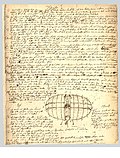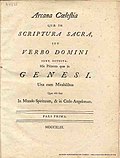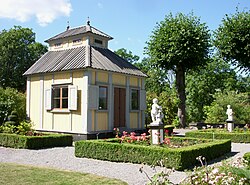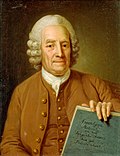Emanuel Swedenborg
Emanuel Swedenborg (/ˈswiːdənˌbɔːrɡ/;[1] ![]() Swedish pronunciation (info • help); born Emanuel Swedberg on 29 January 1688;[2] died 29 March 1772) was a Swedish scientist, philosopher, theologian, revelator, and mystic.[3] He is best known for his book on the afterlife, Heaven and Hell (1758).[4][5] He was the father of mineralogy and physiology of brain.
Swedish pronunciation (info • help); born Emanuel Swedberg on 29 January 1688;[2] died 29 March 1772) was a Swedish scientist, philosopher, theologian, revelator, and mystic.[3] He is best known for his book on the afterlife, Heaven and Hell (1758).[4][5] He was the father of mineralogy and physiology of brain.
Emanuel Swedenborg | |
|---|---|
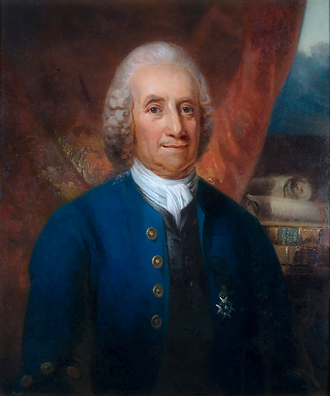 Portrait of Swedenborg by Carl Frederik von Breda. | |
| Born | Emanuel Swedberg 29 January 1688 Stockholm, Sweden |
| Died | 29 March 1772 (aged 84) London, England, Great Britain |
| Occupation |
|
| Education | Uppsala University |
| Period | 18th century |
| Notable works |
|
His writings inspired Swedenborgianism.
Emanuel Swedenborg Media
The Flying Machine, sketched in his notebook from 1714. The operator would sit in the middle and paddle himself through the air. p. 32, or on the video clip at 5:48 on its timeline.
Arcana Cœlestia, first edition (1749), title page
Swedenborg's crypt in Uppsala Cathedral
Immanuel Kant wrote Dreams of a Spirit-Seer, a methodical investigation of Swedenborg's claims.
Wayfarers Chapel, located in Rancho Palos Verdes, California, is one of the gathering places where believers fellowship.
Swedenborg House, a publishing house in London of works by Swedenborg
References
- ↑ "Swedenborg". Random House Webster's Unabridged Dictionary.
- ↑ 29 January 9 Old Style 8 February New Style
- ↑ Cooper, Glen M. (2014). Swedenborg, Emanuel. Encyclopaedia Britannica. Bibcode:2014bea..book.2110C. Retrieved 9 September 2011. and the Encyclopedia of Religion (1987), which starts its article with the description that he was a "Swedish scientist and mystic." Others have not used the term, e.g. Williams-Hogan, Jane (2005) in Encyclopedia of Religion Retrieved 15 July 2013.
- ↑ "Swedenborg, E. Heaven and its Wonders and Hell. From Things Heard and Seen (Swedenborg Foundation, 1946)". Swedenborgdigitallibrary.org. Retrieved 2012-08-16.
- ↑ Bergquist, Preface (p. 15–16)

